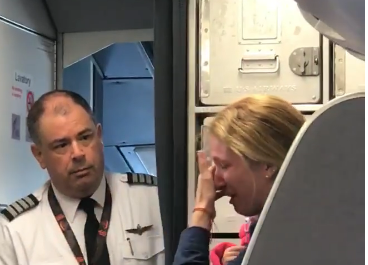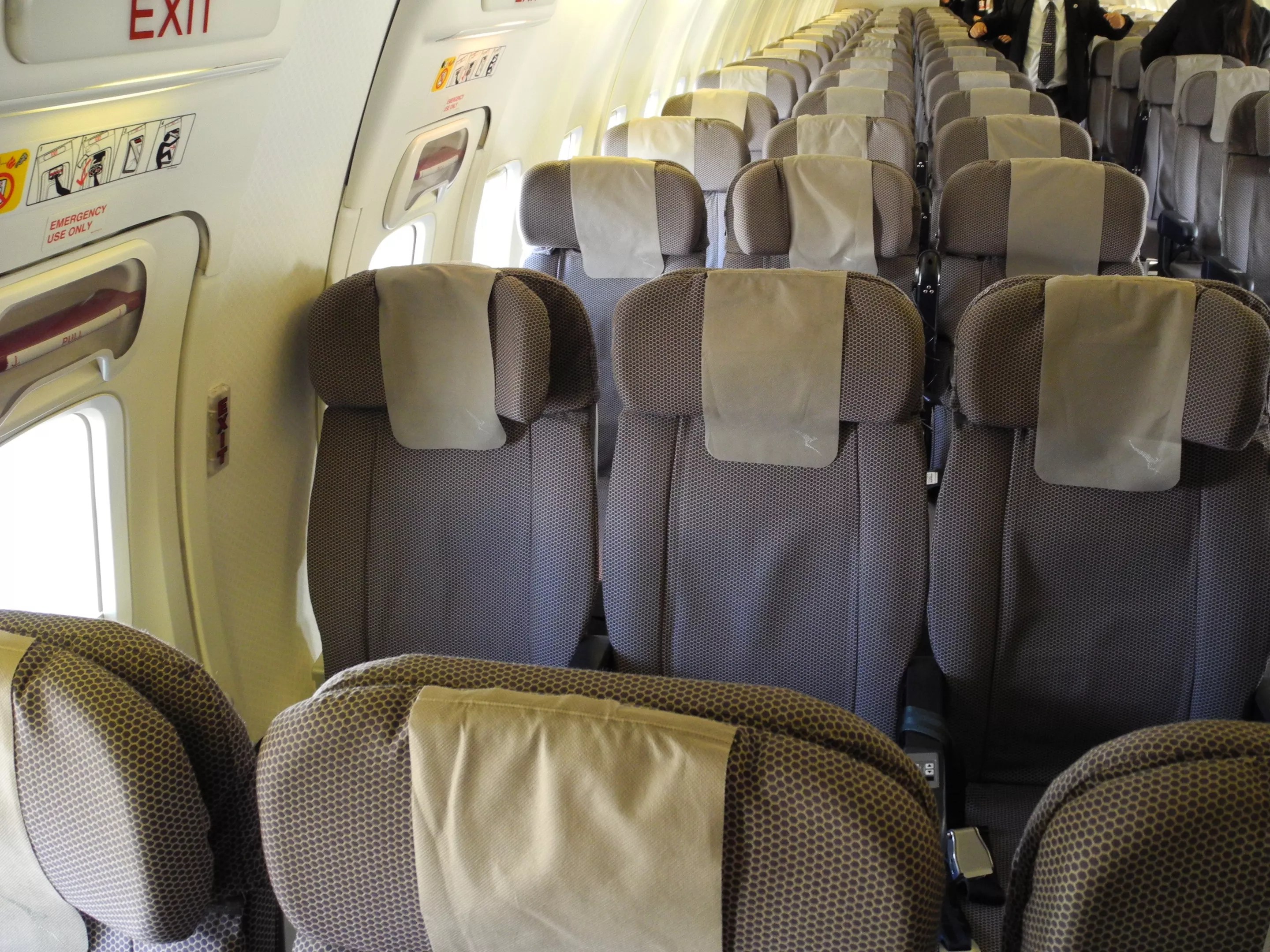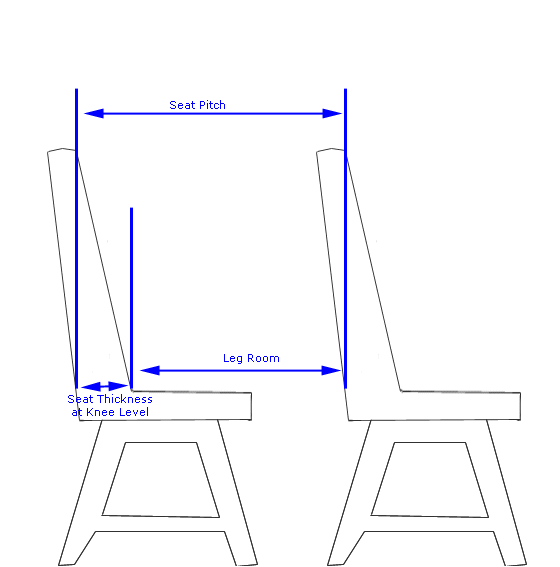

Audio By Carbonatix
Guest columnist Terry Maxon worked as an airlines reporter in Dallas for more than two decades, covering the major carriers headquartered in North Texas. Here, he offers his take on the airlines’ recent run of negative attention — deserved and otherwise.
If you’re like most people, you may be wondering why the skies over America seem to have become so wild recently. The examples are easy to remember: a doctor dragged off a United Airlines flight, flight attendants wrenching a stroller away from a distraught woman with kids on an American Airlines flight; a Delta Air Lines passenger booted for getting up during taxiing. What’s happening?
First of all, there will always be an abundance of airline complaint stories if a reporter wants to chase them. The numbers dictate it.
In 2016, U.S. airlines carried about 744 million passengers, or about 2 million each day. If one in 100 has a gripe about something – seat assignment, damaged bag, rude gate agent, bad checkpoint experience, slow delivery of their Diet Coke – that would be more than 20,000 unhappy people a day.
But almost all of us have shock absorbers between our ears. We go with the flow. A late flight, a bad seat assignment, the last bag off the conveyor, someone reclining their seat in our lap – we sigh and let it go. But we’re the ordinary unhappy customers, not the really unhappy.
For the sake of argument, let’s say only one one-thousandth of 1 percent (0.001 percent) of the daily flying mob ends up truly unhappy – they were bumped against their will, their bags were stolen, a flight attendant unloaded on them, they missed the wedding, graduation, or funeral. That’s 20 people a day, 20 stories a day. And the actual number of unhappy people who have a gripe they’d like to air is much higher, I’m sure.
You can make a career out of reporting about unhappy airline customers. Even when airlines are almost perfect (and they aren’t almost perfect, most days), there’s always some story. A video of a fight onboard a flight is newsworthy any time. Sorry. We can’t help ourselves.
Most of the “bad airline” stories involve cases that started when a passenger violated some rule.
Second, the United Airlines incident sensitized the news media to potential stories. Without the United Airlines incident, most of the stories coming out would not have been aired or written. But so much attention was devoted to the United incident that it elevated the public’s and media’s interest in similar stories.
Third, and I say this without defending any airline, most of the “bad airline” stories involve cases that started when a passenger didn’t obey the flight crew or otherwise violated some rule.
The woman who tried to keep her double stroller with her. The United passenger who refused an order to get off the airplane. The family who tried to put a car seat on a seat for another passenger who didn’t take the flight (another son), thereby using a ticketed seat for an ineligible passenger. The man who ignored the seat-belt light and got up to go to the bathroom during taxiing. The woman who ignored the seat-belt light and got up to go to the bathroom during descent.
I once had a coworker complain to me that a flight attendant made her take out her earphones during takeoff, under safety rules then in effect. The coworker was outraged that the flight attendant didn’t trust her to have her music player off. I had no sympathy since someone continuing to use a music player would look exactly like someone with their music player off.
She informs me that the story was more complex than that. But as I saw it, it was simple – she didn’t want to do what the flight attendant told her to do. Whether the passenger is right or not, you have to do what the pilot or flight attendant tells you to do on the airplane. Now, we can argue about whether the safety rules are reasonable or whether the airline’s rules on ticketing or other matters are reasonable. But those are the rules, and it’s the airline’s airplane.
With this spate of recent stories, we might come to the conclusion that passengers are registering ever more complaints against airlines, that complaints are soaring. Here are some facts.
In 2016, airline customers lodged 10,833 complaints with the U.S. Department of Transportation. That’s 1.52 complaints per 100,000 passengers. By comparison, the year before they registered 12,771 complaints, or 1.90 per 100,000. That’s a 20 percent drop in the rate of complaints in 2016 compared with 2015.
This is encouraging, but the rate of complaints is still historically high. In 2014, the number of complaints was 1.29 per 100,000. Go back 10 years, and there were 0.87 complaints per 100,000 in 2006.
Here’s something the DOT numbers don’t show: the impact of social media and, perhaps more important, the ability to take video on most cellphones. Few people know that they can complain to the DOT, but many, many know they can post a nasty tweet, unhappy Facebook comment, or highly entertaining video and really get an airline’s attention.
“We have become a nation of outrage fueled by social media,” says veteran airline reporter Ted Reed. “This mood elected a president. I cannot quite figure out how airlines got into the middle of this.”
Reed, who began covering airlines some 28 years ago for the Miami Herald and now writes for TheStreet.com, agreed that “most airline passengers have a good experience. But social media became the medium of the unhappy and the outraged – despite the opportunity it offers to ‘like’ stuff. So recent airline incidents are largely a social media phenomenon with only a minimal relationship to airline customer service.”
Aware of this growing phenomenon, airlines keep growing their staff to counter the cyber complaining. Several years ago, Southwest Airlines showed off its social media room where a team of employees was keeping constant tabs on what their passengers were saying about them on Twitter, Facebook, and other platforms. If they got a compliment, they thanked the customer. If they got a complaint, particularly about something that was happening right then, they worked to resolve the situation before it got out of hand.
The room was filled with video screens displaying floating tweets, comments, whatever, as the employees watched or typed away or otherwise responded to the problems that popped up many times during the day (and night).
Southwest regularly has among the lowest rate of complaints, as measured by DOT. Last year, it received 0.47 complaints per 100,000 passengers, lowest of the major U.S. carriers. Compare that to Spirit Airlines, an ultra-low-fare carrier, which recorded 6.74 complaints per 100,000.
I don’t like adding regulations, but someone has to protect the passengers from the race to the bottom in economy coach.
When I was a daily reporter, I received more customer complaints about Spirit than all other airlines combined. That likely was due to an interview I did with Spirit’s then-chief executive officer, Ben Baldanza, in which he defended the company’s practices and policies. People Googled “Spirit Airlines” and found me and my e-mail address.
In that interview, Baldanza said Spirit wouldn’t be able to offer its rock-bottom fares if it didn’t adhere to its business plan, which charged extra for basically everything except the seat and the seatbelt. If it waived its policies, it wouldn’t be so inexpensive, he said.
I had told him about a woman who had flown on Spirit on a round-trip ticket from Minneapolis-St. Paul to Phoenix to visit relatives. Her husband called her in Phoenix to tell her that their young daughter had died suddenly of a previously undiagnosed physical problem.

With all the attention paid to social media videos and onboard service, is anyone noticing that the size of seats are shrinking?
Wikicommons
She couldn’t get a Spirit flight back home soon enough, so she booked a ticket on another flight. She contacted me some time later because Spirit had declined to refund any money for the part of the trip she had not taken.
Baldanza said that was a very sad case indeed, but insisted that Spirit had to stick to its no-refund policy for tickets such as hers to be able to offer its cheap fares. The woman had bought a nonrefundable fare, and Spirit had nonrefunded it.
As I remember, the complaints didn’t involve situations when Spirit was breaking its rules. The passengers just didn’t like them because the rules seemed so … unfair.
Baldanza departed Spirit in January 2016, and new CEO Robert Fornaro has by all accounts tried to make the airline more customer-friendly. Initial reports indicate he’s making some headway. And as bad as Spirit’s 6.74 per 100,000 rate of complaints was in 2016, it was way less than its 11.73 per 100,000 rate in 2015.
But what’s our freshest memory of Spirit Airlines? Video of the Spirit passengers throwing punches at the Fort Lauderdale airport May 8 when Spirit had to cancel a spate of flights because of a lack of pilots. Now we have a lot of pundits on television or in the newspapers asking why has airline service gotten so bad.
In the constellation of airline gripes, I’m more concerned about the tendency to reduce legroom than charge fees for bags or bump passengers from overbooked airplanes. By paying so much attention to the altercations captured on cellphones, we might be missing some of the more systemic abuses that make more fliers miserable. I think the amount of unfocused unhappiness on airplanes is due to the full airplanes and decreasing legroom in the back of the airplane, where most of us sit.
When I started covering airlines in 1990, load factors (percentage of seats filled with passengers) was 62 percent. To put it another way, nearly four of every 10 seats were empty on the average flight. When major carriers launched a half-price sale in summer 1992 and everyone commented on how crowded the airplanes were, the loads were barely in the 70s.

There’s a difference between legroom and seat pitch, but reductions to either increase that cramped feeling onboard.
Wikicommons
Now, it’s a surprise if you have an empty seat beside you unless you’re leaving at 5:30 a.m. or 10:30 p.m. U.S. airlines averaged loads of nearly 85 percent on domestic flights last year. It was over 87 percent in June and July 2016. That means there’s a packed airplane on most flights between 8 a.m. and 8 p.m.
Our perception of crowding is as much how much room we have beside us as we have in front of us. And if you’re sitting between two big passengers — or even two small ones — you’re more stressed than if you aren’t sandwiched in there. Then you add in the fact that they’ve taken an inch or two from your legroom and you realize you’re stuck in your little narrow prison for the next one to 12 hours.
American Airlines recently said it was reducing the pitch – the spacing between seat rows – on its next generation of Boeing 737s, in the economy section. Other airlines have reduced pitch. New-design seats that are thinner may minimize the space that we’ll lose, but even tighter legroom will not make a long trip any shorter.
I think it may be about time for the federal government to step in and set some minimums on legroom. I don’t like adding regulations, but someone has to protect the passengers from the race to the bottom in economy coach.
This article has been updated to adjust the passengers flying per day to 2 million.